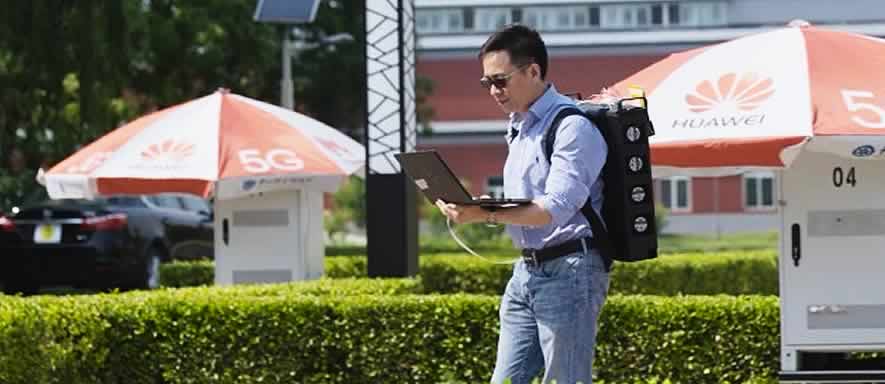Huawei leads with the completion of China's second-phase 5G radio technology test in Huairou District, Beijing. This test procedure was organized by IMT-2020 (5G) Promotion Group. During the C-Band test, Huawei adopted 5G New Radio, Massive MIMO, and other technologies using the entire 200 MHz bandwidth to achieve over 6 Gbps of single-user downlink throughput and over 18 Gbps of cell peak rate.
The world's first Huawei 5G test terminal was utilized for radio technology verification. This terminal enabled more than 100 channels of on demand 4K UHD video in a single 5G base station. The clarity and smooth playback in vehicle-mounted mobile scenarios helped to demonstrate a superior experience offered by 5G C-Band Enhanced Mobile Broadband (eMBB).
Huawei is the first to complete 5G network slicing test to meet diversified service requirements in three typical scenarios. Network slices enjoy flexible configuration with excellent cooperation between the air interface and network to provide a more secure and differentiated user experience. An extensive range of services are available on a single network with an air interface latency of less than 0.5 ms and over 4 million single-cell connections. Both exceed 5G requirements specified by the International Telecommunication Union (ITU).
Huawei has completed large-scale service verification based on an actual network and service environment scenario ahead of schedule. This is more than a key milestone of China's 5G R&D test, which also indicates a significant step forward for 5G industrialization.
During the test procedures, Huawei implemented interoperability tests involving radio frequency and interworking functions together with upstream and downstream vendors. Huawei partnered with instrument vendors (Rohde & Schwarz, Keysight Technologies, and DT Link Tester), chipset vendors (Spreadtrum Communications and MediaTek), and other companies to promote industry maturity.
Mrs. Wang Zhiqin, Deputy Director of the IMT-2020 (5G) Promotion Group and the China Academy of Information and Communications Technology (CAICT) emphasized that, "The second-phase 5G R&D system verification was launched in September 2016 to promote global 5G standardization, accelerate 5G prototype development, and build the 5G industry chain.”
Zhiqin added, “This test used a set of unified equipment and test specifications for 5G-oriented typical scenarios. Thanks to proactive support from global operation, system, chipset, and instrument companies, we have reached preset goals and accelerated the formation of an industry ecosystem."
Dr. Tong Wen, Huawei Fellow and Wireless Network CTO highlighted that, "Huawei launched 5G R&D as early as 2009 and since then is committed to driving technological innovation and cross-industry collaboration. Huawei's 5G research achievements have been hugely validated during the second phase of the 5G test. In the future, Huawei will continuously focus on 5G R&D to promote the sound development of the 5G industry in close participation with global partners."








